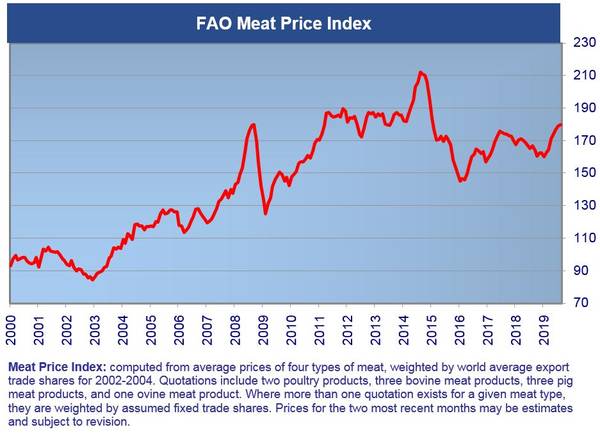The FAO Meat Price Index averaged 179.8 points in August, up 0.5 percent (nearly 1 point) from its revised value for July, continuing the trend of moderate month-on-month price increases shown since February. With the latest increase, the index value stands 12.3 percent above its level in January 2019 and 7.8 percent above the corresponding month last year. In August, price quotations for pigmeat strengthened further, underpinned by a strong import demand from Asia, principally China, where the African Swine Fever (ASF) continued to limit domestic pigmeat production. Despite strong import demand, poultry and ovine meat price quotations remained steady, reflecting increased export availabilities from the main producing regions. While international trade in bovine meat remained robust, its price quotations denominated in USD declined marginally, reflecting the weakening of national currencies of some large exporting countries, including Australia.


On the other hand, the FAO Cereal Price Index declined by 6.4 percent from the previous month. Maize values turned sharply lower due to expectations of a much larger than previously anticipated harvest in the United States of America, the world's largest maize producer and exporter. Wheat prices also remained under downward pressure, reflecting ample export availabilities, but those of rice edged up, due to seasonal effects as well as concerns over the impact of weather on crops in Thailand.
The FAO Sugar Price Index was down 4.0 percent from July, due largely to the weakening of the Brazilian real, as well as prospects of larger shipments by India and Mexico.
By contrast, the FAO Vegetable Oil Index rose by 5.9 percent in August, hitting an 11-month high amid a rebound in global import demand for palm oil as well as unfavorable weather conditions in Indonesia's major growing regions. Soy oil prices also rose, driven in part by lower than anticipated crush volumes in North America.
Thursday September 5, 2019/ FAO.
http://www.fao.org




